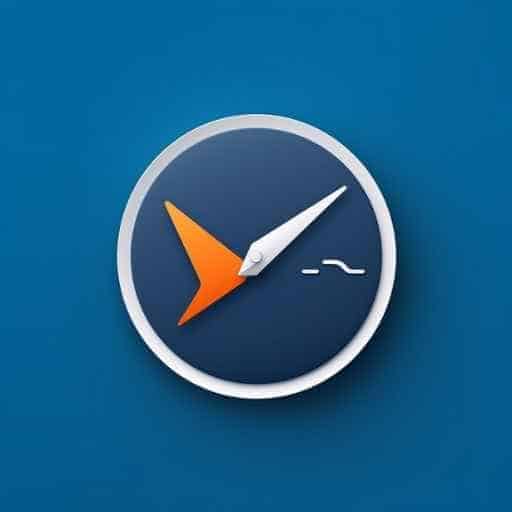Introduction
In today’s fast-paced world, staying organized and managing tasks efficiently is more critical than ever. One way to achieve this is by using a tickler system. A tickler system is a tool that helps individuals and businesses keep track of important dates, deadlines, appointments, and other tasks.
We receive referral fees from partners: Learn more
Definition of Tickler System
A tickler system is a simple but powerful organizational tool that helps people remember important events or tasks. It works by creating reminders for future events or deadlines in advance so that the individual can prepare for them. These reminders can be set up as physical files or digital folders with notes attached.
The core idea behind a tickler system is to create a centralized location where all crucial information related to upcoming events or tasks can be organized. This makes it easier for individuals to prioritize their work and ensure they meet their obligations without forgetting anything.
Importance of Using a Tickler System in Business and Personal Organization
Using a tickler system offers several benefits in personal and business settings. For instance, it enables individuals to stay on schedule, prioritize their work efficiently, significantly reduce stress, and avoid missing critical deadlines.
In the business world, a tickler system helps companies manage crucial projects effectively without encountering delays or failing to meet client expectations. It allows employees to anticipate potential bottlenecks or issues before they arise and provide solutions proactively.
A tickler system is essential for anyone who wants to stay organized in today’s fast-paced world. Whether you are looking to manage your personal life better or part of an organization looking for ways to streamline workflow processes effectively, incorporating this tool into your routine will make your life easier and more productive.
Types of Tickler Systems
Using a tickler system can be an effective way to keep track of important tasks, appointments, deadlines, and other information. Depending on personal or organizational preferences, there are two main types of tickler systems: manual and electronic.
Manual Tickler Systems (Paper-Based)
Manual tickler systems are the traditional way to manage tasks using paper-based or hardcopy documents such as memos, calendars, post-it notes, journals, or binders. These systems are best suited for small organizations or individuals who prefer physical copies of documents in front of them for greater control and visibility. The main advantage of using a manual tickler system is that it requires little to no technical expertise to set up and maintain.
There are different ways to set up a manual tickler system. One option is to use a calendar with either daily or monthly tabs where tasks can be organized by the due date.
Alternatively, one can use manila folders labeled with the date the task is due each day during that month. For example: “January 1,” “January 2,” … “January 31.” Any relevant document should go into its corresponding folder until its due date arrives.
Electronic Tickler Systems (Software-Based)
Electronic tickler systems work similarly to manual ones except that they use software instead of hardcopy documents. These systems have become increasingly popular as technology has evolved, making our lives more interconnected.
Electronic ticklers offer several advantages over their paper-based counterparts, including accessibility from anywhere with internet access and the ability to easily share information between team members. When setting up an electronic tickler system, one must first choose whether they want cloud-based or local storage on their computer system.
Cloud storage allows easier sharing across multiple devices, while local storage keeps all data locally but may limit access to just one device. Several software options, including Trello, Todoist, and Asana, provide different features depending on personal preference.
Choosing between a manual or electronic tickler system depends on personal preferences and organizational needs. While manual systems can be easy to use and require no technical expertise to set up and maintain, electronic systems offer greater accessibility and flexibility for teams working remotely or frequently traveling.
Determine the Purpose of the System
Before setting up a tickler system, it’s important to determine the purpose of the system. The purpose will define what type of system to use and how it should be organized. For example, an electronic calendar-based tickler system would be most appropriate if the purpose is to manage appointments and meetings.
On the other hand, a paper-based tickler system may be best if the purpose is to manage physical documents such as contracts or invoices. It’s important to take some time and think through what you want your tickler system to achieve.
Consider your personal or business goals and objectives that you want to accomplish using your new tickler system. Think about what documents or tasks you need to manage effectively and any deadlines you need to meet.
Choose the Appropriate Type of System Based on Needs and Preferences
Once you have defined the purpose of your tickler system, it’s time to choose which type of system works best based on your needs and preferences. Several options are available, including manual paper-based systems or electronic software-based systems. If you prefer a paper-based approach, consider using index cards or pre-printed forms that allow easy filing by date or category.
Alternatively, if an electronic approach is preferred, consider using software applications such as Evernote or Trello, which offer customizable features and can be accessed from anywhere with an internet connection. Selecting the right type of tickler system depends on personal preference; manual and electronic systems can work well if used correctly.
Establish a Filing System for Physical Documents or a Folder Structure for Electronic Documents
Whether choosing a manual or electronic approach for organizing documents in a tickler system, establishing a filing structure is essential for keeping everything organized effectively. For paper-based systems: begin with labeling folders by date (e.g., Monday, Tuesday, Wednesday) or by category (e.g., contracts, invoices). You can also use color coding to help identify tasks or documents.
Within these folders, you will place the relevant documents and tasks that must be addressed on that specific day. For electronic-based systems: consider creating a folder structure that is easy to navigate for specific projects or tasks.
Use descriptive names for your folders so that it’s easy to remember what each folder contains. Use the search function if necessary to quickly locate files.
Create a Schedule for Reviewing and Updating the System
Once your tickler system is in place, set up a schedule for reviewing and updating it regularly. Depending on your schedule, this may need to be done daily or weekly. During this review process, check all items due within 24-48 hours and move older items forward as needed.
Update any information that has changed, such as deadlines or project updates. Ensuring your tickler system is kept up-to-date will ensure it remains an effective tool for managing your time and tasks effectively.
Benefits of Using a Tickler System
Improved organization and efficiency in managing tasks, appointments, deadlines, etc.
A tickler system provides a structured approach to managing tasks, appointments, and deadlines. Setting reminders for future events or follow-up dates allows you to focus on the present without worrying about what may come next. This system boosts your productivity by ensuring everything you need to do is accounted for and organized in one central location.
You will no longer need to juggle multiple calendars or sticky notes with reminder alarms. In addition to providing structure, a tickler system can help you prioritize your tasks more effectively.
By having a clear overview of all your commitments, you can better assess which tasks are most urgent or important and allocate your time accordingly. This leads to better time management skills and reduces the risk of burnout from trying to tackle too many things at once.
Reduced risk of missing important deadlines or appointments
Missing an important deadline or appointment can severely affect personal and professional life. A tickler system ensures that all dates are recorded accurately and alerts you when something is approaching so that nothing falls through the cracks. For example, if one of your clients has requested a follow-up call in two weeks, you could add this task to your tickler system.
The software will then remind you about the call two days before it’s due so that there is enough time for preparation on your end. By reducing the risk of missed deadlines or appointments, a tickler system also helps build trust with clients who rely on the timely delivery of services.
Increased productivity and peace of mind
The greatest benefit offered by a tickler system is increased productivity as individuals spend less time focusing on organizational logistics like calendar management. By automating these processes – especially through electronic ticklers – people are freed up to focus on what matters, the work itself. In addition to increased productivity, a tickler system also provides peace of mind.
By relying on a trusted system, individuals can trust that they will be reminded of key dates without remembering everything themselves. This reduces stress and anxiety while allowing people to remain focused on their work and goals.
Overall, a tickler system is a valuable tool for anyone who needs help managing their time and staying organized. Whether you’re an entrepreneur trying to keep track of appointments or a busy professional juggling multiple deadlines, this system can provide structure and peace of mind that allows you to perform at your best.
Tips for Maintaining an Effective Tickler System
Regularly review and update the system
One of the most important things to remember when using a tickler system is the need for regular review and updating. This means ensuring that all tasks, appointments, deadlines, and other documents are up-to-date and relevant. A good rule of thumb is to set aside a specific time each week or month to go through all items in the tickler system.
During this time, you should assess what needs to be completed or addressed in the short term versus what can be postponed. When reviewing your tickler system, it’s important to ensure that all items are appropriately labeled or categorized.
This can help you quickly identify which items are most urgent and require immediate attention versus those that can wait until later. Additionally, ensure that any completed tasks or documents are removed from the system so as not to clutter up space unnecessarily.
Use color-coding or labeling to identify different types of tasks or documents easily
Another helpful tip for maintaining an effective tickler system is using color coding or labeling to differentiate between different types of tasks or documents. For example, you might use one color for bills that need to be paid, another for appointments that cannot be missed, and a third color for less urgent reminders.
Using labels can also help ensure that items are more easily searchable within your tickler system. By assigning specific keywords or tags to each item (e.g., “taxes,” “insurance,” “doctor’s appointment”), you’ll be able to quickly find what you’re looking for without having to sift through irrelevant information.
Keep the system simple and easy-to-use
It’s crucial when creating a tickler system – particularly if it’s electronic –to remain simple and easy to use. This means avoiding overly complicated or convoluted systems that can be difficult to navigate or understand.
Instead, focus on creating an intuitive and easy-to-follow system, with clear instructions and labeling as needed. Remember that a tickler system is meant to make your life easier, not harder, so it’s important to tailor it to your specific needs and preferences.
If you struggle to keep up with the system or consistently miss deadlines or appointments, consider revising it or seeking out alternative methods of organization that may work better for you. With a bit of practice and attention to detail, however, using a tickler system can be an incredibly effective way of staying organized both in your personal and professional life.
Conclusion
Using a tickler system is essential for those who want to stay organized, efficient, and on top of their tasks and appointments. The benefits of using a tickler system include improved organization, reduced stress levels, and increased productivity both in personal and business life. However, setting up an effective tickler system requires careful planning, attention to detail, and regular maintenance.
It is important to determine the purpose of the tickler system before using it. Knowing what needs to be tracked can help identify which system to use.
Manual or paper-based systems are best for smaller projects or working alone, while electronic or software-based systems are more suitable for larger projects with multiple team members. Either way, establishing a filing structure that identifies different types of documents or tasks can help save time and effort in the long run.
Regular review and maintenance are key to maximizing the benefits of using a tickler system. Scheduling regular check-ins will ensure that deadlines are met on time while allowing opportunities for updates or changes as needed.
It is also important to keep the system simple but flexible enough to adapt. A tickler system provides numerous benefits that greatly improve one’s personal and professional life.
By following these tips on setting up an effective tickler system and maintaining it over time, individuals can reduce stress levels while increasing productivity and efficiency toward achieving their goals. With proper planning and attention given to this tool’s implementation throughout daily workflow habits—such as color-coding or labeling techniques—one can see significant results in how well they manage their schedule!






